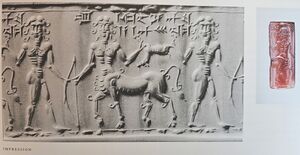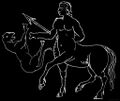Lupus: Difference between revisions
(inserted yet another image) |
|||
| Line 16: | Line 16: | ||
== Transformation of Images == |
== Transformation of Images == |
||
<gallery> |
<gallery> |
||
File:Stellarium-UR.IDIM.jpg|Jessica Gullberg's impression of the Babylonian constellation UR.IDIM (The Mad Dog) in Stellarium 2021. |
File:Stellarium-UR.IDIM.jpg|Jessica Gullberg's impression of the Babylonian constellation UR.IDIM (The Mad Dog) in Stellarium 2021. |
||
File:Cen+lup kugel.jpg|Centaurus et Lupus on the ancient Greek Kugel Globe, drawing by SMH 2021. |
File:Cen+lup kugel.jpg|Centaurus et Lupus on the ancient Greek Kugel Globe, drawing by SMH 2021. |
||
File:FarneseSMH2017 web 11.jpg|Centaurus et Lupus on the ancient Greco-Roman Farnese Globe, drawing by SMH 2017. |
File:FarneseSMH2017 web 11.jpg|Centaurus et Lupus on the ancient Greco-Roman Farnese Globe, drawing by SMH 2017. |
||
| Line 22: | Line 22: | ||
File:Centaurus et Lupus - Mercator.jpeg|Centaurus and Lupus constellations from the Mercator celestial globe 1551 (CC0). |
File:Centaurus et Lupus - Mercator.jpeg|Centaurus and Lupus constellations from the Mercator celestial globe 1551 (CC0). |
||
File:Uranometria Centaurus.jpg|Centaurus as drawn by Joh. Bayer (1603) and Lupus drawn by the user of this exemplar of the atlas (extra map for Bayer). |
File:Uranometria Centaurus.jpg|Centaurus as drawn by Joh. Bayer (1603) and Lupus drawn by the user of this exemplar of the atlas (extra map for Bayer). |
||
File:Simon1894 Cen+Lup.jpg|Centaurus et Lupus at Planisferio celeste (Carlos Simon 1894) |
|||
</gallery> |
</gallery> |
||
Revision as of 19:10, 15 September 2024
One of the 88 modern IAU constellations. Lupus forms part of the super-constellation Centaurus-Lupus-Ara which mythologically belong together.
Etymology and History
The Greek constellation Θηρίον (Therion, i.e. 'the Beast') is in the same position as the Mesopotamian constellation UR.IDIM, the Mad Dog. The Mesopotamian constellation might depict a rabid dog or wolf: the wording is can refer to both. However, Greek uranology took over the Mesopotamian constellation, it was transferred to an animal sacrificed to the gods. An image of the Babylonian Urmahlullu-daemon that was discovered in 2019 on a seal suggests some potential that the Greek image of a centaur-like creature who sacrificed the animal may (or may not) be based on one of the ancient Mesopotamian interpretations of Urmahlullu holding a dead animal. Together with Centaurus and Ara, Lupus forms a super-constellation.
Mythology
In Babylonian mythology, the centaur-like lion-man called Urmahlullu was considered a monster, a door keeper (Wiggerman 1992, 52), which makes this creature a protective spirit, a benevolent creature (cf. Krebernik in UR.IDIM).
The mythographers of antiquity do not agree on what is depicted here: Hyginus referred to the animal as simply ‘a victim’, while Germanicus Caesar said that the centaur was either carrying game from the woods, or was bringing gifts to the altar.[1] On the marble globe of the Atlas Farnese, the centaur holds a sacrificial animal in his right hand, which he brings to the censer (Ara). Originally, the sacrificed creature was not specified, but it was called ‘the beast’. Only later was it renamed Lupus (Latin: The Wolf).
The association of the dead beast with a wine-skin, also recorded by Eratosthenes, appears as a logical consequence of the sacrificed animal, as the skin of slaughtered animals can be used as a drinking vessel. Some Saharan nomads still use this today. It is therefore clear that in Greek uranography the beast belongs to the centaur called ‘Cheiron’ who is regarded as the only wise centaur. He was the teacher of numerous Greek heroes, and his image in the sky also symbolizes cultivated behavior and religion as he sacrifices the beast on the altar.
Transformation of Images
IAU Star Names
There are no classical star names in Lupus. In 2023, it was suggested to use the original Babylonian name of the UR.IDIM as name for the brightest star of the (later Greek, Greco-Roman and modern) constellation.














